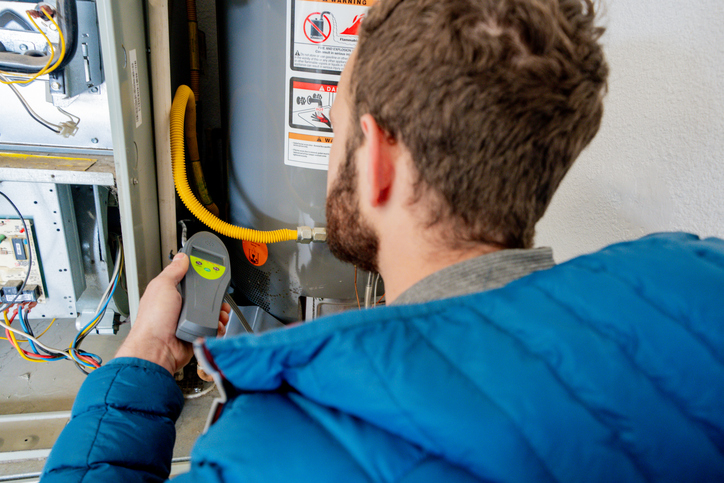As winter’s chill sets in, the last thing any homeowner wants is to experience a furnace breakdown. When the heat goes out unexpectedly, it can turn a comfortable home into an uncomfortable situation, especially during frigid temperatures. Understanding what to do during an emergency furnace failure can save you time, money, and stress. This article will guide you through essential troubleshooting steps, maintenance tips, and when to call in the professionals for emergency furnace repair.
1. Recognizing the Signs of a Furnace Problem
Before the heat goes out completely, there are often warning signs that indicate your furnace is in trouble. These can include:
– Strange Noises: Unusual sounds, such as banging or squealing, can signal a problem within the furnace.
– Inconsistent Heat: If certain rooms are colder than others or if your furnace works hard to maintain the set temperature, it’s time to investigate.– Yellow Pilot Light: A healthy pilot light should be blue. A yellow or flickering light may indicate a gas issue or incomplete combustion.
– Increased Energy Bills: A spike in the heating costs could suggest that your furnace is working harder than it should, possibly due to inefficiency or malfunction.
What to Do
If you notice any of these signs, consider scheduling a maintenance check before an emergency arises.
2. Immediate Steps to Take When the Heat Goes Out
If your furnace stops working and the heat goes out, follow these immediate steps:
Check the Thermostat
Confirm that your thermostat is tuned to “heat” and that the temperature is set higher than the current room temperature. If it’s a programmable thermostat, check for any scheduled settings that might prevent heating.
Inspect the Circuit Breaker
A tripped breaker can slash the power supply to your furnace. Locate your electrical panel and inspect if any breakers have flipped. Reset any tripped breakers and see if that restores power to your heating system.
Examine the Furnace
Look for obvious signs of trouble. Ensure that the furnace door is securely closed, and check for any visible blockages around the vents. If your furnace is gas-powered, make sure the gas valve is open.
3. Troubleshooting Common Furnace Issues
If your furnace still isn’t working, here are some common issues you can troubleshoot:
Clogged Filters
A clogged air filter can restrict airflow, causing the furnace to overheat and shut down. Check the filter and replace it if it’s dirty. Depending on usage, it’s recommended to change your filter every 1-3 months.
Ignition Issues
If you have an electric ignition furnace, ensure that the ignitor is functioning properly. In gas furnaces, check the pilot light and the gas supply. If the pilot light is out, follow the manufacturer’s instructions to relight it safely.
Overheating
If the furnace shuts off shortly after starting, it may be overheating. This could be due to a dirty filter, blocked vents, or a malfunctioning limit switch. Addressing these issues can often resolve the problem.
4. When to Call a Professional
While some furnace issues can be resolved through basic troubleshooting, others require the expertise of a professional. Call an HVAC technician if you notice:
– Persistent Problems: If your furnace continues to malfunction despite your efforts, it’s best to seek professional help.
– Gas Leaks: If you smell gas or suspect a leak, leave your home immediately and contact your gas company or emergency services.
– Electrical Issues: If you experience electrical problems, such as frequent tripping of circuit breakers, call an electrician.
– Unusual Odors: Any strange smells coming from your furnace can indicate a serious issue that needs immediate attention.
5. Preparing for Future Emergencies
Preventative measures can help you avoid emergencies in the future. Consider the following:
Regular Maintenance
Schedule annual furnace maintenance with a qualified technician. Regular inspections can catch potential issues before they become major problems. During maintenance, the technician will clean the system, check for leaks, and ensure that all components are functioning properly.
Invest in a Smart Thermostat
Smart thermostats can alert you to potential issues with your heating system. Many models can send notifications when temperatures drop unexpectedly, helping you take action before a complete failure occurs.
Keep Emergency Numbers Handy
Keep contact information for your HVAC service provider readily available. In an emergency, you’ll want to contact a professional quickly to restore heat.
Create an Emergency Plan
Have a plan in place for emergencies. This includes knowing how to manually operate your furnace, having alternative heating sources available (like space heaters), and ensuring your family knows where to find emergency supplies.
Experiencing a furnace failure can be a stressful situation, especially during the winter months. By recognizing the signs of trouble, knowing how to troubleshoot common issues, and understanding when to call a professional, you can effectively manage an emergency furnace repair situation.
Don’t let a furnace breakdown leave you in the cold! For dependable furnace repair, contact Hawk’s Services at 507-226-9950. Our experts are ready to restore your comfort quickly and efficiently!





